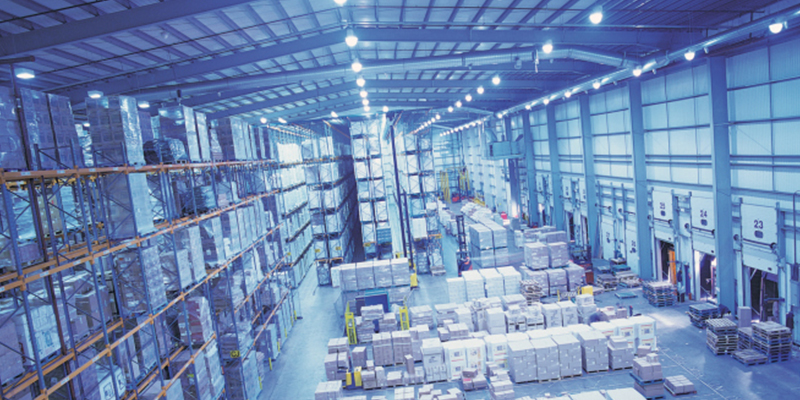Buoyed by changing social and technological trends and exacerbated by the COVID-19 pandemic, industrial real estate has evolved in recent years from a slow-moving and stable asset class to one with dynamism and rapid growth. That has drawn the attention of the largest and most opportunistic investors, including Blackstone, KKR, J.P. Morgan, AXA Investments PGIM, Westcore, and Allianz Real Estate, all of which have jumped into the industrial segment in force in recent years.
The influx of institutions demonstrates that some of the largest and most sophisticated commercial real estate investors have determined that the industrial surge is no flash in the plan. A considerable amount of smart money is betting that the growth in industrial real estate is still in its beginning stages.
Bullish Fundamental Drivers
Underpinning the industrial investment revolution is the sector’s fundamentals, which are driven by demand emanating from the growth in e-commerce that has been accelerated by the pandemic. As shelter-in-place orders and social distancing rules were put in place last spring, people almost immediately shifted the bulk of their purchases to online shopping. E-commerce/non-store retail sales increased by 23.4% through the third quarter of 2020, while food and beverage sales grew by 10.4%, according to Cushman & Wakefield.
The growth in e-commerce is not new; online sales have been growing by 15% per year since the early 2000s. That has increased demand for well-located logistics space with high ceilings and modern technology with robotics and sorting suitable for distribution. According to a new industrial space demand forecast published by the NAIOP Research Foundation, net absorption rates in industrial reached their highest levels since 2000, with higher rents and low vacancy rates. The report projects total net absorption in 2021 to be 314.9 million square feet, with a quarterly average of 78.7 million square feet. In 2022, net absorption is projected to be 231.6 million square feet, with a quarterly average of 57.9 million square feet.
Rising demand for space with modern amenities has boosted industrial construction, and deliveries have barely been able to keep up with demand even as volume skyrockets. Deliveries totaled a record 327.2 million square feet in 2020, a new record and up 29% year-over-year, according to services firm JLL. More than 300 million square feet was under construction as of year-end 2020, so the spigot isn’t likely to be turned off soon. The influx of supply prompted a small increase in the industrial vacancy rate in 2020, although it remains just over 5% and well below long-term the average. Rent growth increased 4.2% in 2020, per JLL.
According to forecasts by CBRE Economic Advisors, growth in e-commerce will drive demand for an additional 1.5 billion square feet of industrial space in the next five years, or around 300 million square feet per year.
Strong Performance
Strong fundamentals have helped industrial to outperform other commercial real estate property types. According to the MSCI PREA U.S. AFOE Quarterly Property Fund Index, which tracks returns of institutional money managers, the industrial sector has had the highest returns over the last one-, three- and five-year periods. As of year-end 2020, industrial produced annual returns of 11.4% for one year, 13.0% over three years and 12.8% over five years. Industrial property returns far exceeded any other asset class and the total index, which produced annual returns of 2.4% for one year, 5.4% for three years and 6.3% for five years.
The same story held for the public markets, where industrial topped every other property type and has been the only property category other than self-storage to have positive returns over one, three and five years. Annual returns for industrial REITs are 7.7% for one year, 21.2% for three years and 23.2% for five years, while the FTSE Equity REIT Index returned -5.0% for one year, 10.6% for three years and 9.1% for five years as of Feb. 25, 2021.
Investors have taken note of the bullish performance, enabling industrial to attract an increasingly larger share of commercial real estate capital, both equity and debt. One example of this trend is the MSCI/PREA index. Industrial represented 23.3% of the index’s investments at year-end 2020, up by 7.6 percentage points (a 48.1% increase) from 2017, when it represented 15.8% of the index. In dollar terms, the amount of capital allotted to industrial in the index over three years grew by $29.5 billion, to $76.1 billion. Over the last three years, industrial accounted for more than 80% of the growth of the index, which totaled $316.9 billion in 4Q20, up from $280.5 billion in 4Q17.
Industrial is also taking up a greater amount of debt capital, in part because property values are increasing but also because lenders are eager to hold in their portfolios loans on what is considered an exceptionally safe asset class. While all commercial lending was down by 30% in 2020 and by 18% year-over-year in the fourth quarter, lending on industrial properties was only down 18% for the year and was up 15% in 4Q20 compared to a year earlier, according to the Mortgage Bankers Association.
CMBS is an example of this trend. Industrial loans have been a relatively small share of the market until recently. Loans backed by industrial properties comprised more than 10.5% of annual CMBS issuance only once between 2000 and 2018, with a high of 11.2% in 2015, according to Commercial Mortgage Alert (CMA). However, the market share of industrial loans increased to 16.2% in 2019 and a record 22.7% in 2020. Over the last three years, securitization programs floated $37.4 billion of loans backed by industrial properties, almost as much as the $39.3 billion securitized the 10 prior years combined, per CMA.
What’s more, industrial loans are performing better than any other property type. Coming into the pandemic, only 1.4% of industrial loans in CMBS pools were delinquent, compared to 2.2% delinquency for all CMBS, according to data analytics firm Trepp. Industrial delinquencies peaked at 1.8% in May 2020 and have fallen to 0.9% as of January 2021. In contrast, the delinquency rate of all CMBS peaked at 10.3% in June 2020 and stood at 7.6% as of January 2021, per Trepp. CMBS delinquencies are being driven by hotel (19.3% as of January 2021) and retail properties (12.7%).
Industrial Growth to Continue
The commercial real estate industry is undergoing tectonic shifts in demand and investment strategy. Population is moving from high-cost coastal metros to warm weather metros with more affordable housing and pleasant lifestyle amenities. Meanwhile, how we shop and use office space was evolving even before the pandemic.
Industrial real estate, which is a critical component of the growth in e-commerce, was a beneficiary of social trends even before the COVID-19 crisis. Now the pandemic produced a sharp spike not just in the volume of deliveries, but in the scope of products delivered, such as groceries. While the outcome of the impact of the pandemic remains a question, there seems to be little doubt that there is no going back on the way people live their lives. Shopping seems a good bet to change permanently. As a result, occupier and investor demand for industrial real estate seems destined to take up a larger share of commercial real estate capital.








